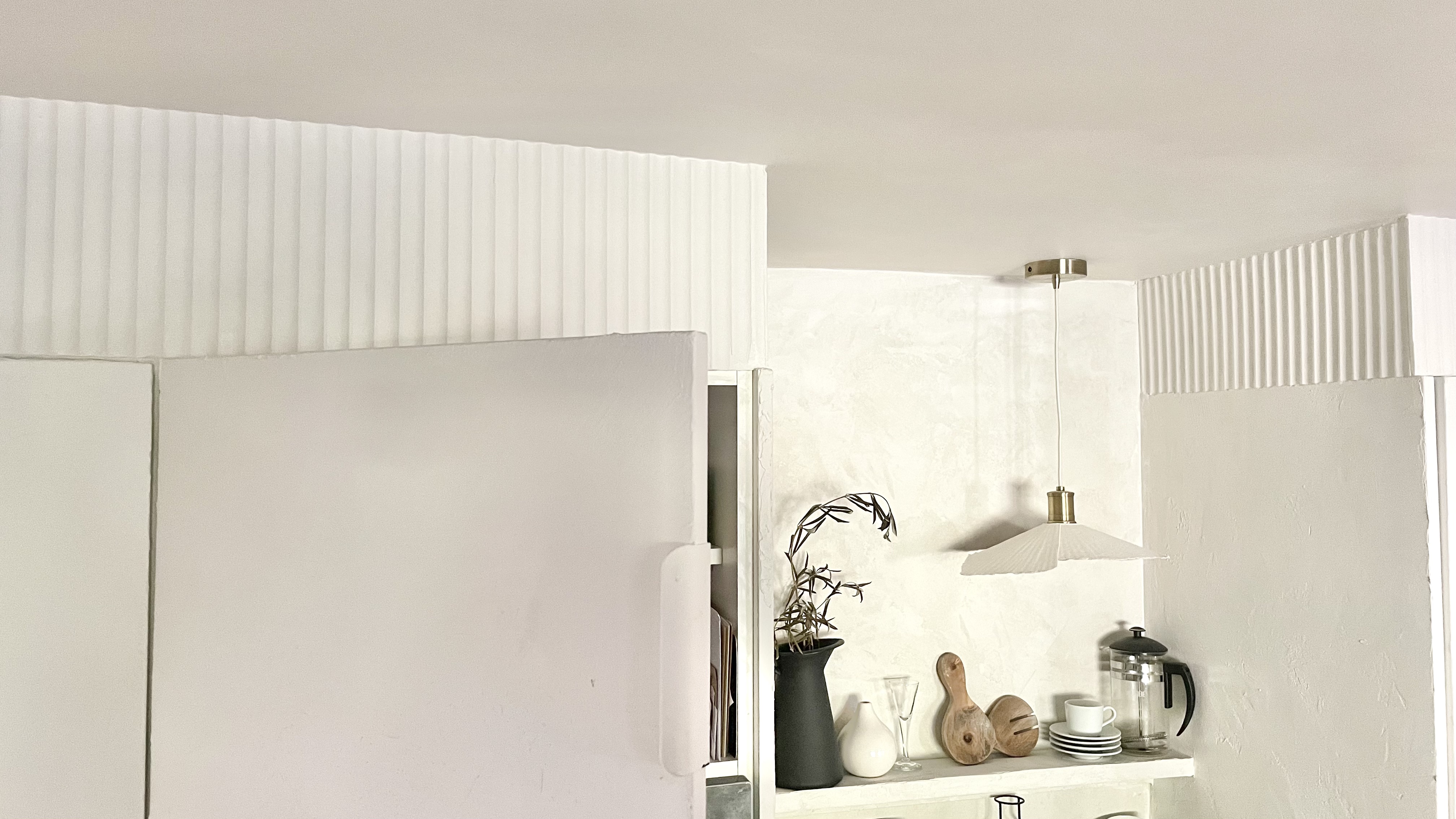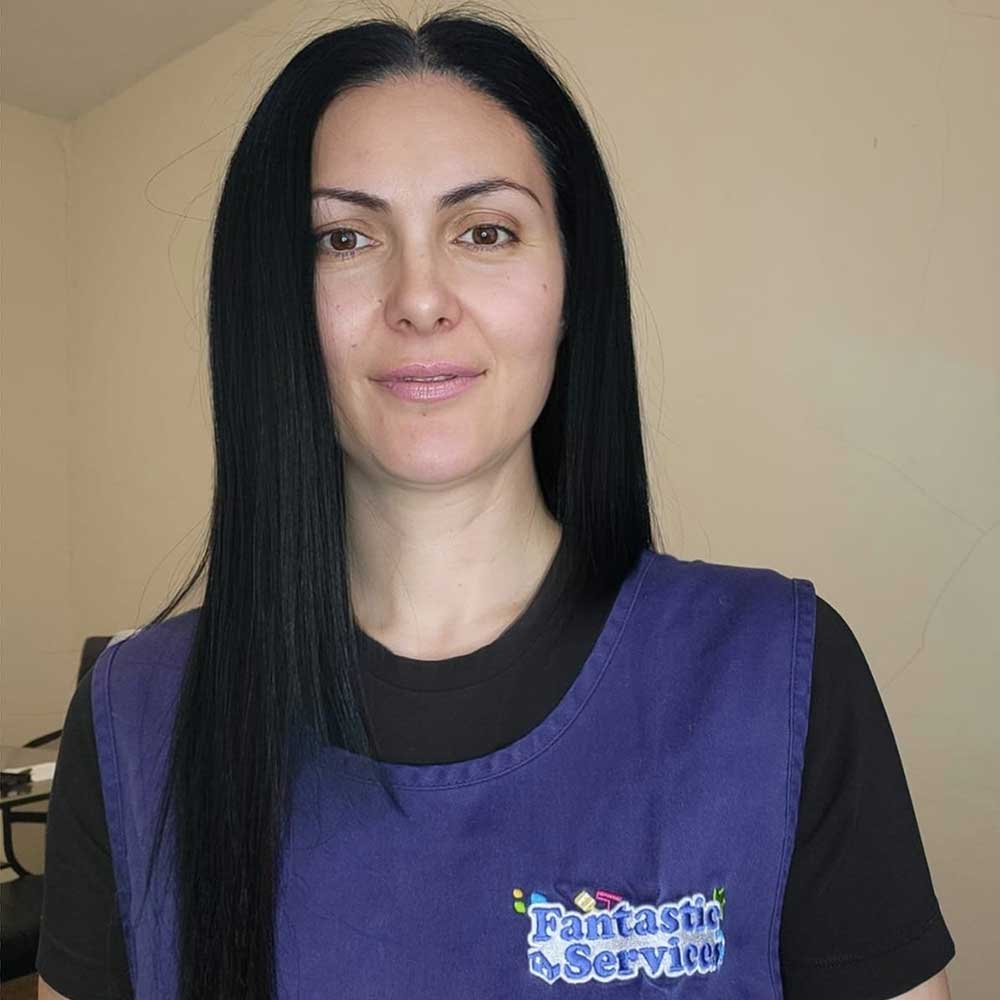How to clean grease off kitchen cabinets in 5 simple steps – using baking soda
Experts share how to clean grease off kitchen cabinets with ease and without causing any damage to the doors


With the kitchen being at the heart of any home some days can feel like a never-ending cycle of cooking and cleaning, so why spend more time than necessary battling with greasy kitchen cabinets?
Knowing how to clean grease off kitchen cabinets is one of those essential tips for a clean kitchen because the presence of unsightly and frankly unpleasant cooking grease is an easy way to make any kitchen paper dirtier than it is.
"This grease and grime is an accumulation of cooking and touching them with greasy hands," says Fantastic Service's cleaning expert Petya Holevich. "I recommend using common kitchen staple ingredients instead of expensive and harmful commercial products for removing grease when cleaning kitchen cabinets because it’s important to approach this task carefully to avoid damaging the cabinet's finish."
After all, you don’t want to use harsh cleaning products or scrub too hard and remove the finish from the cabinet front, but equally, you don’t want to spend all day gently wiping to no avail. Here's our expert guide to gently but effectively remove grease from kitchen cabinets.
How to clean grease off kitchen cabinets in 5 easy steps
Cleaning grease off kitchen cabinets is a relatively easy task when you know how and the good news is that you don’t need to use harsh chemicals to do so because natural ingredients are effective at doing the job - they are after all capable of cleaning tasks even the toughest of cleaning tasks such as cleaning an oven and cleaning a kitchen sink drain.
You will need:
- Dish soap (multi-surface spray is optional)
- Cleaning sponge
- Microfibre cloth
- Baking soda
- Vacuum or dustpan and brush (for occasional deep cleaning)
1. Start at the top

The first thing to note is that if you keep on top of regular maintenance cleaning, it prevents a heavy build-up of grease on the cabinets. Wipe the kitchen cabinet fronts a couple of times a week with a damp cloth and follow up with a dry one.
Sign up to our free daily email for the latest royal and entertainment news, interesting opinion, expert advice on styling and beauty trends, and no-nonsense guides to the health and wellness questions you want answered.
Note: Never soak kitchen cabinets, as excess water can cause damage (swelling and cracking) to the joints and edges.
Without maintenance cleaning, you’ll need to complete a full de-grease of the cabinets, and it’s best to start at the top. Start by decluttering, paying particular attention to the tops of the cabinets removing anything stored up and out of eye level.
Once surfaces are clear use a hand-held vacuum to remove large pieces of dust and dirt from the top – this will make wiping them down a bit easier.

Petya Holevich is an experienced house cleaning and laundry expert with over 5 years of dedicated service at Fantastic Services. Her journey with the company not only contributed to the maintenance of immaculately clean domestic spaces but has also put her at the forefront of training new teams.
2. Make a cleaning solution for the cabinet doors
An eco-friendly dish soap is the perfect product to clean grease off most kitchen cabinet materials. A dish soap solution is mild enough for wood, painted wood, high-gloss, and laminate kitchen cabinets.
Luckily it is a straightforward process. Effective enough to do the dishes, washing up liquid can easily cut through grease and grime on kitchen surfaces. To make the cleaning solution Petra advises: Mix a solution of a few drops of dish soap with warm water to create an effective and safe cleaning solution. Dip a microfiber or soft cleaning cloth into it, squeeze out the excess liquid ready to clean."
An eco-friendly multi-surface spray is an optional alternative to dish soap and allows targeted application to the kitchen cabinet doors. We recommend a reusable bottle to reduce plastic waste, and dissolvable cleaning tabs are a great way to reduce environmental impact even further. Tim Keaveney, co-founder of Homethings advises, “Spray the multipurpose cleaner onto the sponge rather than directly onto cabinets.”
3. Wipe or scrub the grease marks

Now for the satisfying bit, cutting through the grease and restoring those kitchen cabinets to their former glory. Using your cleaning solution of choice gently wipe the greasy areas of the cabinets. Take your time and work in circles while the cleaning agent cuts through the grease.
The trick is not to use an abrasive cloth as this could scratch the paint or varnish on your cabinet fronts. I can personally recommend Homethings Spongethings magic sponges - they’re compostable and cool as they start dehydrated and they puff up when you put water on them.
4. Tackle stubborn grease with baking soda and vinegar
The wonder of cleaning with baking soda is highly useful if you have tough grease that dish soap simply isn't cutting through.
"For stubborn grease, add a small amount of baking soda to a more concentrated amount of the original cleaning solution to create a gently abrasive paste," suggests Petya, but not before she warns: "Just be careful if you’re dealing with delicate finishes to avoid damaging them."
"For wooden cabinets, mix a solution of 1 part white vinegar and 1 part olive oil," says Petya, this cleaning with vinegar method is similar to that of cleaning wooden spoons. Apply it to a soft cloth and gently rub it into the wood in the direction of the grain. You can also use a commercial wood polish but make sure you follow the manufacturer's instructions on the label.
5. Dry the kitchen cabinets

"After cleaning, use a dry and clean cloth to wipe down the cabinets and remove any remaining moisture from their surface," advises Petya. This is an important step because, as mentioned, surface water can result in damage to kitchen cabinets.
No one wants the expense of replacing their kitchen sooner than necessary, so once you’ve removed all traces of grease from your kitchen cabinets, be sure to wipe them over with an absorbent cloth - a dry microfibre cloth is good for this task, or some absorbent recycled kitchen roll.
"If you have used olive oil or wood polish, this step will also help to restore the cabinet's shine," adds Petya
FAQ
What is the best thing to clean grease off kitchen cabinets?
It's easy to assume that harsh chemicals are the only effective solution for cleaning grease off your kitchen cupboards, but it can be much easier than that. Using kitchen staples you already have in your organized pantry can give you flawless cabinets without the need for toxic products.
The humble dish soap and water combination works wonders cutting through grease on kitchen cabinets and surfaces. "Dish soap can be an effective and safe option for cleaning grease off of kitchen cabinets," agrees Petya. "However, if the grease buildup is more substantial, consider adding a degreasing agent to the cleaning solution, such as white vinegar which is an excellent natural degreaser."
"For stubborn stains, add a small amount of baking soda to your cleaning solution to create a slightly abrasive paste but still be very cautious when using it on more delicate materials. Especially if you have wooden cabinets, be mindful of the cleaning solutions you use," warns Petya.
To make the paste mix equal parts of baking soda with warm water in a small bowl to create a paste. This can be used to scrub years of dirt from your kitchen cupboards. You can even use a toothbrush for extra scrubbing action and to get to those hard-to-reach areas, such as in between cabinets.
"For wooden a mixture of white vinegar and olive oil will be more suitable as it’s gentle on wood and can effectively remove grease as well as commercial wood polishes."
How do you get thick grease off the top of kitchen cabinets?
The top of your kitchen cabinets can be difficult to see, meaning many of us can neglect cleaning them for years without realising just how much dirt can be accumulating up there. This can make it more difficult to clean when we eventually get around to it.
Remove any items stored on top of the cupboard then give the area a good dust – a hand-held vacuum is ideal for this, as is a dustpan and brush. Once any dust and debris has been removed scrub the cabinet tops with diluted dish soap or eco-friendly multi-surface spray.
If the grease and dirt aren’t lifting, try using a white vinegar solution. Wipe white vinegar over the area, applying it lightly with a sponge. Leave the white vinegar to sit for ten minutes, then wipe away with a damp cloth. Ensure all traces of the vinegar are removed to avoid potentially leaving areas exposed to the acidic solution for too long.
As with the front of the cabinets, it's important to remember to thoroughly dry the top of your cabinets once clean to avoid damp damaging your kitchen cupboards or walls.
How do you get grease off cabinets without removing the finish?
To clean away the grease without removing the finish on your kitchen cabinets a gentle approach is key. From avoiding harsh chemicals to using abrasive sponges and clothes that could potentially scratch the surface as you clean – a common worry when cleaning stainless steel surfaces.
Instead, we recommend using natural ingredients which won’t damage the varnish. This can include dish soap and water, baking soda and white vinegar.
Another thing that could potentially cause damage to your kitchen surfaces, is any residual moisture. Therefore leaving your cabinets damp after cleaning is a no-no.
Tim shared the following advice: “We'd advise to spray your cleaner directly onto cloths or sponges rather than directly onto the cabinet to avoid soaking the surfaces. We'd also recommend to dry the cupboards immediately after you've cleaned them with a dry microfibre cloth or even an old tea towel.”
When dealing with grease on kitchen cabinets, keep in mind that the best source of action is to be proactive and perform regular maintenance to prevent heavy grease building up and making cleaning them more of a troublesome task.

Claire is a DIY and home interior writer specializing in budget room transformations, creative DIY projects, and resourceful home styling. Claire runs the popular home interiors blog ClaireDouglasStyling and shares all her DIY tips, tricks, and behind-the-scenes styling insights on her Instagram and Tiktok accounts. When she's not writing, Claire enjoys foraging for flowers and foliage and experimenting with interesting materials and decorating techniques to incorporate into future interior schemes; micro cement and postal tubes were a recent unusual but triumphant pairing. In her spare time, Claire enjoys creating floral installations for her home...the more bonkers the better!